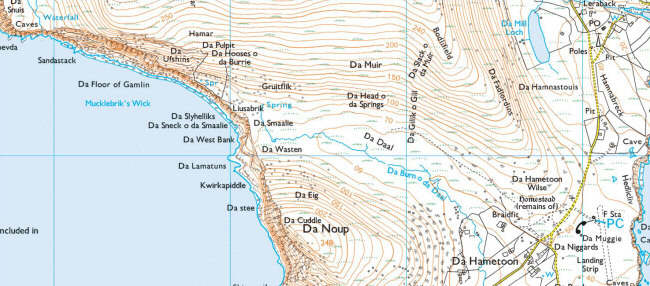 This Is Not A
BLOG!
This Is Not A
BLOG!
Date: 07/01/17
Straight Outta Vinland!
Anyone who knows anything about the history of western Europe will be aware of the aggressive migration of populations from Scandinavia to the British Isles and beyond.
Less well known, but perhaps equally significant, is the story of the raids carried out on Britain by shiploads of aggressive tribesmen coming from the North American colonies established by the Vikings.
It isn't known for sure when these visitations were carried out, but what has become clear in the light of intensive research by - amongst others - Professor Lars Fromm Elb° of the Oslo Historical institute is that ships laden with young men from what is now New York arrived in what is now the Shetland Islands in what is now about 1530 CE.
From further work carried out at the Institutt for Trivielle Forskning in Stavanger under the leadership of Dr. Ingrid Lokke has even revealed to us the names of some of the ships used by the raiders, taken from some of the earliest known records of the invasion yet to be discovered (although many more of those records had been scratched beyond decipherment).
So we know, for example, that the first two ships whose arrival was noted were called the J°br° and the Vossapning, and that there are hints of a third ship - much larger than the others, and stunningly ornamented - which appears to have been called the Pympmarejd.
It isn't entirely clear why these tribes undertook the hazardous journey back across the Atlantic; plunder was far more likely a reason than a desire to stake out new territory or to escape population pressure at home. Fragments of poetry of a type somewhat similar to the verse sagas, and known as rappa, purport to tell the tale of two great chiefs, one called Smńkmah° and the other SÝmabling, and their fierce (and ultimately deadly) rivalry in pursuit of the gold and silver reputedly to be found on the Northern Isles.
It is likely to have been such violent competition for the spoils which led to the failure of any attempts to colonise the islands they reached. Although there is some archaeological evidence that a township - or h˙d - was established on the isle of Foula in the mid-16th century, it is also clear that this was a short-lived development, leaving behind it merely some evidence of burials where, curiously, the skulls of some of them show what look for all the world like bullet holes.
Beyond that, the invaders' sole enduring legacy has been upon the place-names of Foula, as the following map of part of the island illustrates:

(This rampant silliness was sparked off by this piece in the Independent).

 This Is Not A
BLOG!
This Is Not A
BLOG!











